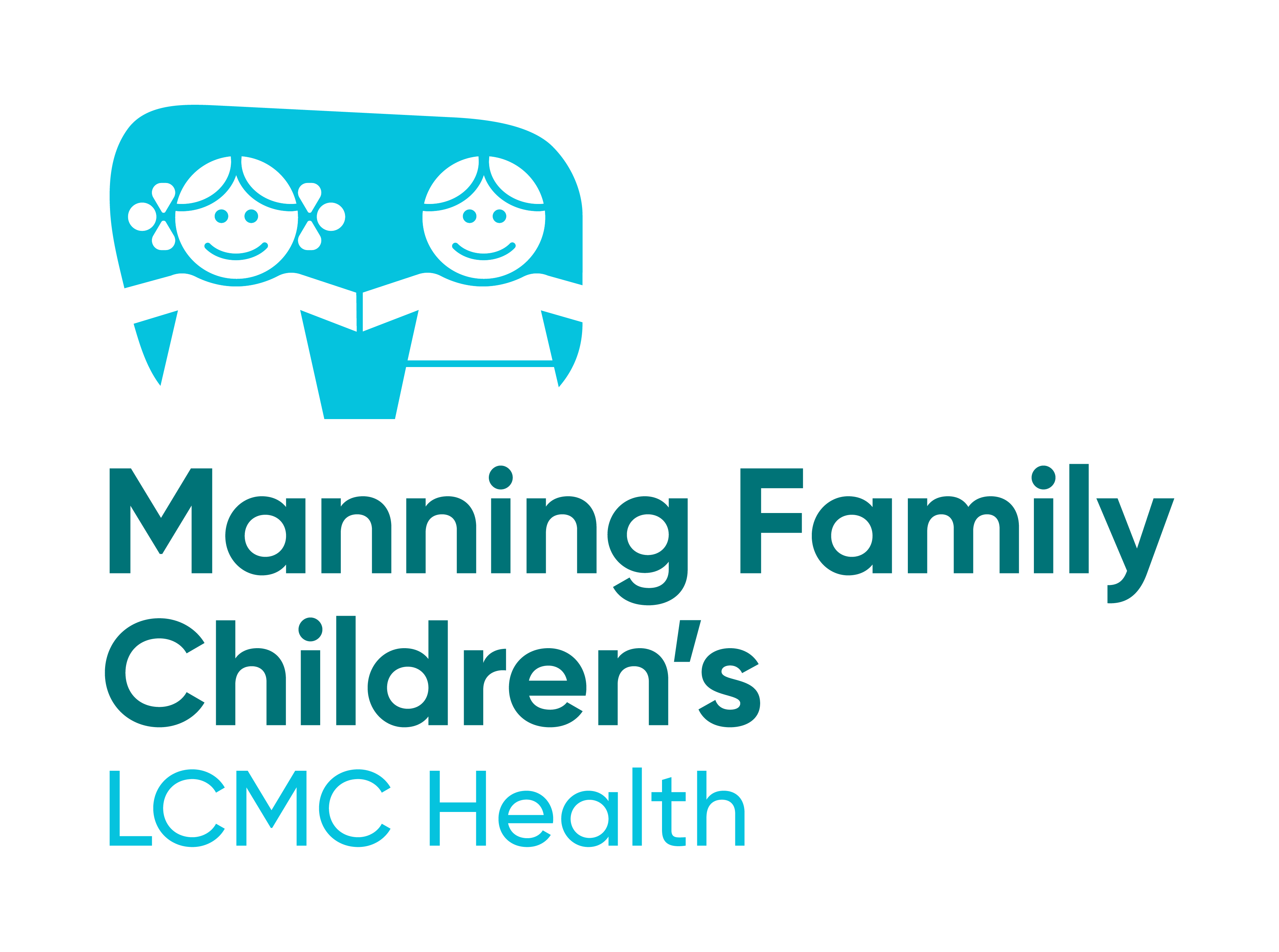Thriving Beyond Sickle Cell Disease: Rylan’s Story of Strength and Support at Manning Family Children’s
- Category: Patient Stories, Hematology
- Posted on:

Ten-year-old Rylan Reddix is a 5th grader with a big imagination and a natural curiosity for technology. He loves spending time on his laptop, especially playing Roblox, an online platform where kids can both play and create games.
At home, he’s known for his sharp wit and playful personality. “He’s really, really sarcastic—in a way I almost hate, but it’s just who he is,” laughs his mom, Tyriana. Though Rylan tends to be shy, once he feels comfortable, his goofy sense of humor shines through. “When he finally comes out of his shell, he makes you laugh,” she said.
Rylan has lived with sickle cell disease since birth—but his diagnosis doesn’t define him. Instead, he continues to grow, learn, and enjoy life just like any other child his age.
An unexpected diagnosis
Rylan’s journey with sickle cell began almost immediately after he was born. His newborn screening revealed the condition, which occurs when both parents carry the sickle cell trait.
For his mom, Tyriana, the news was devastating.
“When they told me he had it, I was like, Oh, my gosh,” she recalled. “It was the one thing my mom always warned me about—if you have a baby with someone who carries the trait, your child could have sickle cell disease. I knew I had the trait, but I didn’t know his dad did, and I didn’t fully understand what sickle cell really meant.”
In those first days of uncertainty, Rylan was referred to Cori Morrison, MD, a pediatric hematologist-oncologist at Children’s Hospital New Orleans, which has since been renamed Manning Family Children’s. 
From the very beginning, she offered Tyriana something she desperately needed: hope.
“I cried when I first heard the diagnosis,” says Tyriana. “But Dr. Morrison told me that medicine and technology have come such a long way. She reassured me that we would be able to manage his sickle cell disease, and that he could live a good life. She made me feel like this wasn’t a death sentence—that we could do more for him, and help him through the pain crises.”
Understanding sickle cell disease
Sickle cell disease is a genetic blood disorder where red blood cells, instead of being round and flexible, are shaped like crescents or “sickles.” These sickle-shaped cells are stiff and sticky, which means they can clump together and block blood flow. When that happens, it causes painful episodes known as pain crises. The disease can also lead to chronic anemia, fatigue, slowed growth, and higher risks of infection.
Because sickle cell affects the blood, it impacts nearly every part of the body. Children with the condition may need extra monitoring, protection against infection, and support during pain episodes. But thanks to advances in medicine, there are more tools than ever to help manage it. Preventive antibiotics like penicillin can reduce infections in young children, folic acid supports healthy red blood cell growth, and medications such as hydroxyurea help reduce crises by encouraging the production of healthier red cells. In some cases, blood transfusions are also used to treat or prevent complications.
Rylan’s treatment and care journey
From the time he was a baby, Rylan’s care has been proactive and steady. He started on penicillin in infancy to protect against infection, a standard first step for children with sickle cell disease. “He took penicillin every day until he was 6 years old,” says Tyriana. “Then they switched him to folic acid. Just this past year, at age 10, he started on hydroxyurea in addition to folic acid.”
“For children with sickle cell disease, we often begin with prophylactic antibiotics like penicillin during infancy to help protect against serious infections,” explained Dr. Morrison. “As they grow, we typically add folic acid to support healthy red blood cell production. In some patients based on their subtype of sickle cell, hydroxyurea is initiated which can reduce the frequency of pain crises and improve overall quality of life. These medications don’t cure sickle cell, but they play a critical role in helping kids like Rylan stay healthy and active.”
For Rylan, this approach has worked—keeping his symptoms mostly under control. His first pain crisis came at age five, when he suddenly complained of pain in his lower body. “That’s the only place he ever has pain,” Tyriana said. “He’ll come to me and say, my butt is hurting, and I know it’s a crisis starting.” Fortunately, his pain crises are relatively rare and typically manageable with medication.
Over the years, Rylan has only been hospitalized a few times and has had just one blood transfusion, at age nine. “That transfusion kept him pain-free for a whole year,” his mom recalled. Most of the time, his crises are managed at home with pain medicine or at the hospital with supportive care. “He usually just needs a stronger dose of Tylenol or ibuprofen, and after a day or two, he’s back to himself.”
When Rylan needs hospital care, the staff at Manning Family Children’s make the experience easier. “They keep him comfortable,” Tyriana says. “There are games, toys, and coloring books to keep him busy, and even a spot for me to sleep so I can stay by his side. It never feels like we’re trapped in a hospital room—it feels like we’re surrounded by people who truly want to help us.”
This supportive environment, combined with consistent follow-up care from Dr. Morrison every few months, has helped Rylan thrive despite his diagnosis.
Lifestyle adjustments: Keeping Rylan comfortable and crisis-free
.jpg) Living with sickle cell means Rylan has to be mindful of things that can trigger pain crises like cold weather, sudden temperature changes, dehydration, or pushing himself too hard. Tyriana has learned to be proactive in helping him avoid these triggers.
Living with sickle cell means Rylan has to be mindful of things that can trigger pain crises like cold weather, sudden temperature changes, dehydration, or pushing himself too hard. Tyriana has learned to be proactive in helping him avoid these triggers.
“He always brings a jacket, even in summer, because he gets cold easily,” she says. “I keep him hydrated, and we don’t stay out too long in the heat or cold.” Whether it’s avoiding cold swimming pools, limiting time outside on very hot afternoons, or making sure he always has water close by, these small adjustments help keep him comfortable and reduce the risk of a crisis.
Rylan also knows how to listen to his body when he feels tired or uncomfortable, and his family respects those limits—giving him the freedom to manage his condition without letting it define him.
School has also become a supportive environment for him. His teachers, coaches, and the school nurse all know about his condition and step in to make sure he doesn’t overdo it. “He does gym class, but if he starts feeling unwell, he goes straight to the nurse. They don’t pressure him,” Tyriana explains. “He knows his body, and we listen to him. As long as he takes his medicine, he really does well.”
For Rylan and his mom, the relationship with Dr. Morrison and the Manning Family Children’s team has been a source of hope and strength.
“I love Dr. Morrison,” said Tyriana. “From the very start, she answered all my questions and explained everything so clearly. She always takes the time to make sure I understand and feel comfortable with Rylan’s care. I can tell she truly wants the best for him, and that means so much as a parent.”
Rylan himself feels so connected to his care team that he recently told his mom he doesn’t want to turn 18—because that would mean leaving Manning Family Children’s.
.jpg)
 Thriving today: Rylan’s resilient life beyond sickle cell disease
Thriving today: Rylan’s resilient life beyond sickle cell disease
Now in the 5th grade, Rylan is thriving. He’s small for his age, but sharp, curious, and gifted. He laughs at his own jokes, and shares his creativity with family. He’s a devoted big brother, too.
For Tyriana, the journey has taught her resilience and perspective. “People told me my child would have a bad life and wouldn’t live past a certain age. But Rylan is living proof that’s not true. This disease doesn’t define him. As long as he’s comfortable and happy, I’m happy.”
Her advice to other families is simple but powerful: “Take your experience as your own, because every child is different. Don’t let someone else’s story decide your child’s future.”
September is Sickle Cell Awareness Month. Join the fight against sickle cell disease today by visiting manningchildrens.org/sicklecell.
For more information about the hematology services at Manning Family Children’s, visit Hematology Services | Manning Family Children's
###
About Manning Family Children’s:
Manning Family Children’s is a 263-bed, non-profit academic pediatric medical center that offers comprehensive healthcare services, including over 40 pediatric specialties, just for children. With more than 600 pediatric providers, Manning Family Children’s offers a comprehensive array of specialized pediatric services in Louisiana and the Gulf South. In addition to its main campus located in New Orleans, Children’s operates a network of specialty clinics across Louisiana, including in Covington, Baton Rouge, Alexandria, Lafayette, and the Mississippi Gulf Coast. Children’s offers primary care at 17 convenient locations, along with a network of statewide pediatric affiliations. Children’s is a proud member of LCMC Health, a Louisiana-based, not-for-profit hospital system which also includes New Orleans East Hospital, Touro, University Medical Center New Orleans, West Jefferson Medical Center, East Jefferson General Hospital, Lakeview Hospital, and Lakeside Hospital. Learn more at manningchildrens.org.



